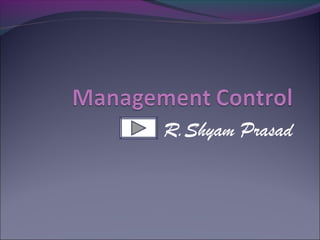The document provides an overview of controlling concepts including:
- The definition and importance of controlling as monitoring activities to ensure plans are followed.
- Types of control include budgetary control, standard costing, just-in-time and ABC analysis.
- Control techniques help managers identify variances from plans, take corrective actions, and improve future performance.
- Effective control systems empower employees and protect organizations from disruptions.




















































